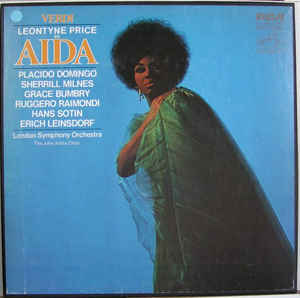
Because the “Grand March” from Aida is so familiar, it’s easy to lose sight of what a masterpiece it is and what its significance is in the opera as a whole. The piece plays a central part in the plot of the opera and is also a great performance possibility on its own for choral groups. I’ve enjoyed singing that version with my own choir.
So, to begin, how does this music fit into the opera’s story? Aida has as one distinction that its plot actually makes a certain amount of sense. Basically (or, as my son used to say when he was little, basicawwy), Egypt is at war with Nubia. Aida is a Nubian princess who has been captured and is serving as the maid of Amneris, the Pharaoh’s daughter. No one at court knows Aida’s true identity, though. Both Aida and Amneris are (of course) in love with the same man, Radames, the captain of the army. So it’s a nice setup: Aida is obviously going to have to choose between her love for her country and her love for Radames. She ends up choosing . . . both. I think the ending of this opera is bone-chillingingly beautiful. Radames has been sentenced to death for the supposed betrayal of his country (by giving info on troop movements to Aida’s father, except he didn’t mean to!), and he’s been buried alive in a tomb, but Aida willingly shares his fate with him, having hidden herself there ahead of time. They sing “O terra, addio” (Oh earth, farewell) as they die, while Amneris kneels above at the entrance praying for Radames’ soul: “Pace, t’imploro, pace t’imploro, pace, pace, pace!” (“I pray for peace, I pray for peace!”) That final “pace” just floats out over the audience. (It didn’t strike me until I looked up a plot summary that Amneris doesn’t know Aida is down there dying, too.)
